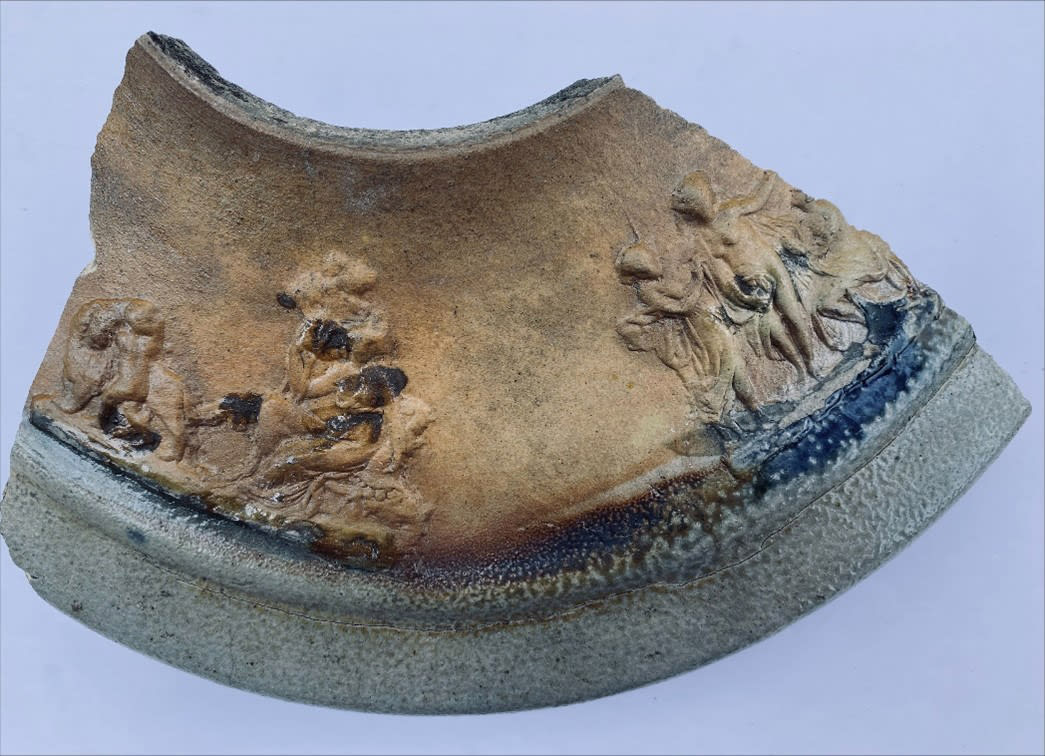Union Station: A not-so-secret trove of 19th century artifacts
In the 1800s, Canada’s most recognized transit hub was a port on Lake Ontario.
Aug 12, 2024
While some may only think of it as a transit stop, Union Station is a treasure trove of artifacts associated with the history of Toronto’s waterfront.
Recent work on the Union Station Enhancement Project (USEP) as part of GO Expansion has revealed several interesting discoveries from the mid-19th century. The archaeology team has uncovered multiple wharf structures and other shoreline infrastructure, along with household artifacts from the time period.
Peter Popkin, Principal Archaeologist and Technical Lead at WSP Canada Inc., the design team for USEP, says his team has been monitoring the site since mid-2023.
The site has full-time, archaeological monitoring since crews are excavating at, or below, depths of 76 metres above sea level. When excavation occurs at these depths, Popkin said there is a high potential of uncovering artifacts.
That’s because before it was Canada's most recognized transit hub, Union Station was a port on Lake Ontario and historical maps show many old docks remain under the present infrastructure.
History of Toronto’s waterfront
In the 1800s, Toronto’s original shoreline was north of today’s rail corridor.
During this period, most of Toronto’s trade was done by boats, so it made sense to have manufacturing facilities near the ports. However, by the 1830s there was a lack of available land along Lake Ontario, limiting the growth of industrial infrastructure. At the same time, there was a growing interest in rail transport.
In the 1850s, a massive campaign of lake-filling began. For the next hundred years, Toronto’s lakeshore was extended farther and farther south to accommodate the railway and new factories.
“They filled in the northern portion of the lake, so the wharves that were built were simply buried there,” Popkin said. “They took garbage from around the city…as well as other dredging material from the lake and it was all just dumped here.”
Toronto’s lake-filling efforts continued until the 1950s when the current shoreline was achieved.
A 3D scan of 19th century wharf cribbing found during construction at Union Station.
A 3D scan of 19th century wharf planking and support beams found on site.
A 3D scan of a waterfront log road (left – also known as a corduroy road) overlying 19th century wharf planking (right) discovered at Union Station.
The area where these wharf structures were found will eventually become a mechanical room located in the new concourse. Above the mechanical room, at track level, this area will also host a new train platform.
Understanding the past
Popkin says these wharf structures don’t have to be preserved since they’re considered a Grade 2 resource in archaeology. This means the findings need to be monitored and recorded, but they don’t have to be left in situ since we already know their history.
However, that doesn’t make the findings any less important.
Popkin said these artifacts provide insight into how Toronto grew from a port city to a railroad town, and then into the transit hub it is today.
“A lot has changed in the world in the last 150 years,” Popkin said. “The city that we're digging up is not the same city that exists here today. So, it really does help us to understand that evolution of the city.”
In addition to the wharves, the archaeology team has uncovered several household items used in the land-filling efforts, including glass soda bottles, stoneware, old shoes, and even a pair of glasses.
They also uncovered Spencer rifles from 1865, which Popkin said were likely dumped off a vessel or one of the wharves.
Popkin said these household items tell “a story of daily life” of how Torontonians lived in the 19th century.
“It's important to kind of understand how the city has developed so that we appreciate what it is now,” he said. “And to better understand how the City of Toronto came to be.”
Looking ahead
We’re building the Union Station of tomorrow, while respecting the heritage of the past. Union Station is the gateway to the region and as part of GO Expansion it’s undergoing much needed modernization to meet transit needs now, and in the future.
Once upgrades are complete, Union Station will accommodate 80 trains per hour – four times the levels of today. GO Transit customers will also enjoy a new concourse that will seamlessly connect Bay and York Streets, provide additional access points to and from the platform levels above and maintain connections into the Bay, York, and VIA concourses, Union Square and Scotiabank Arena.
With these improvements, GO will better serve the thousands of passengers who move through Union Station each day providing faster, safer, and more accessible transit.
For more information on the Union Station Enhancement Project, please visit metrolinx.com/ and follow @GOExpansion on X and Instagram.
by Brooklyn Neustaeter Capital Communications senior advisor
